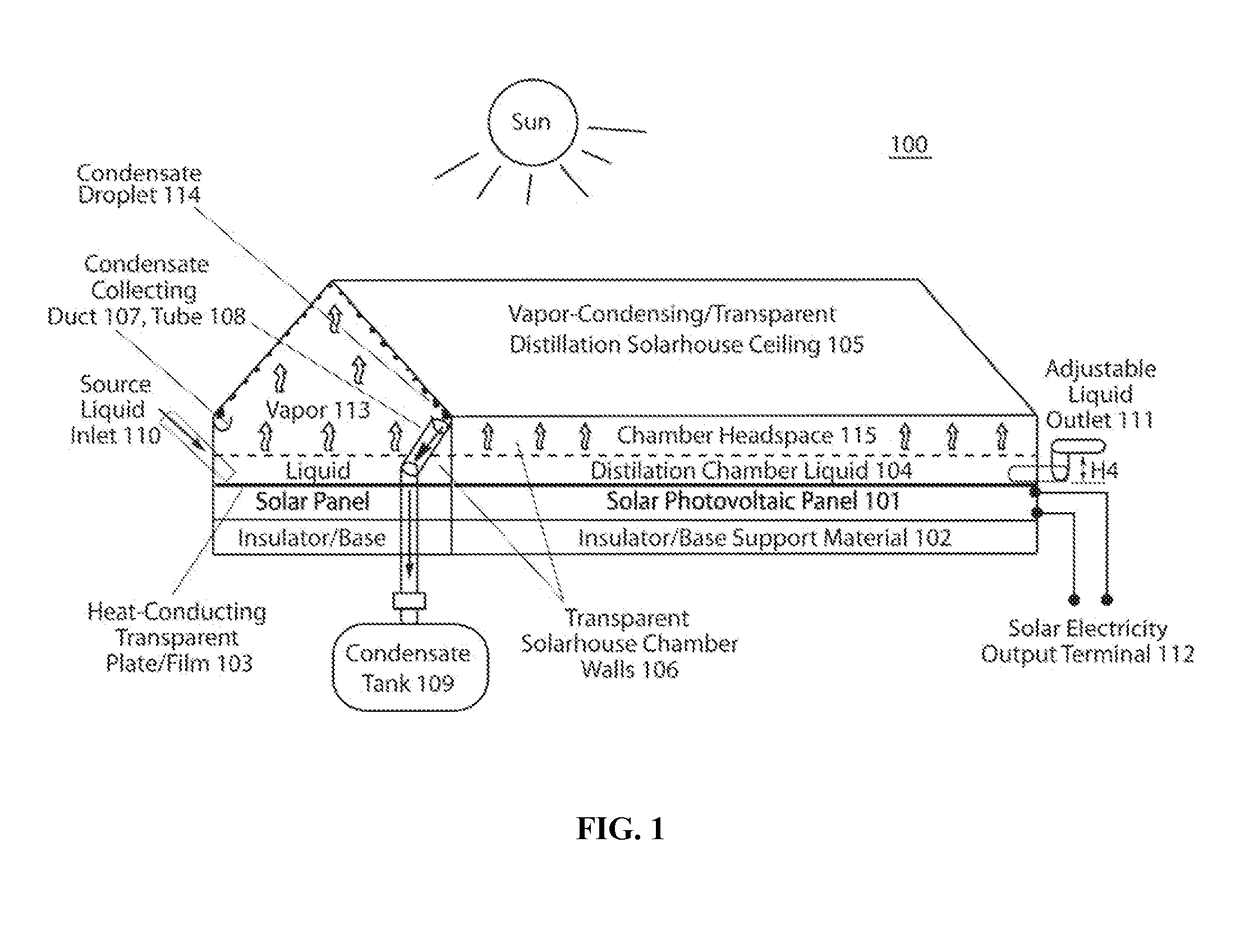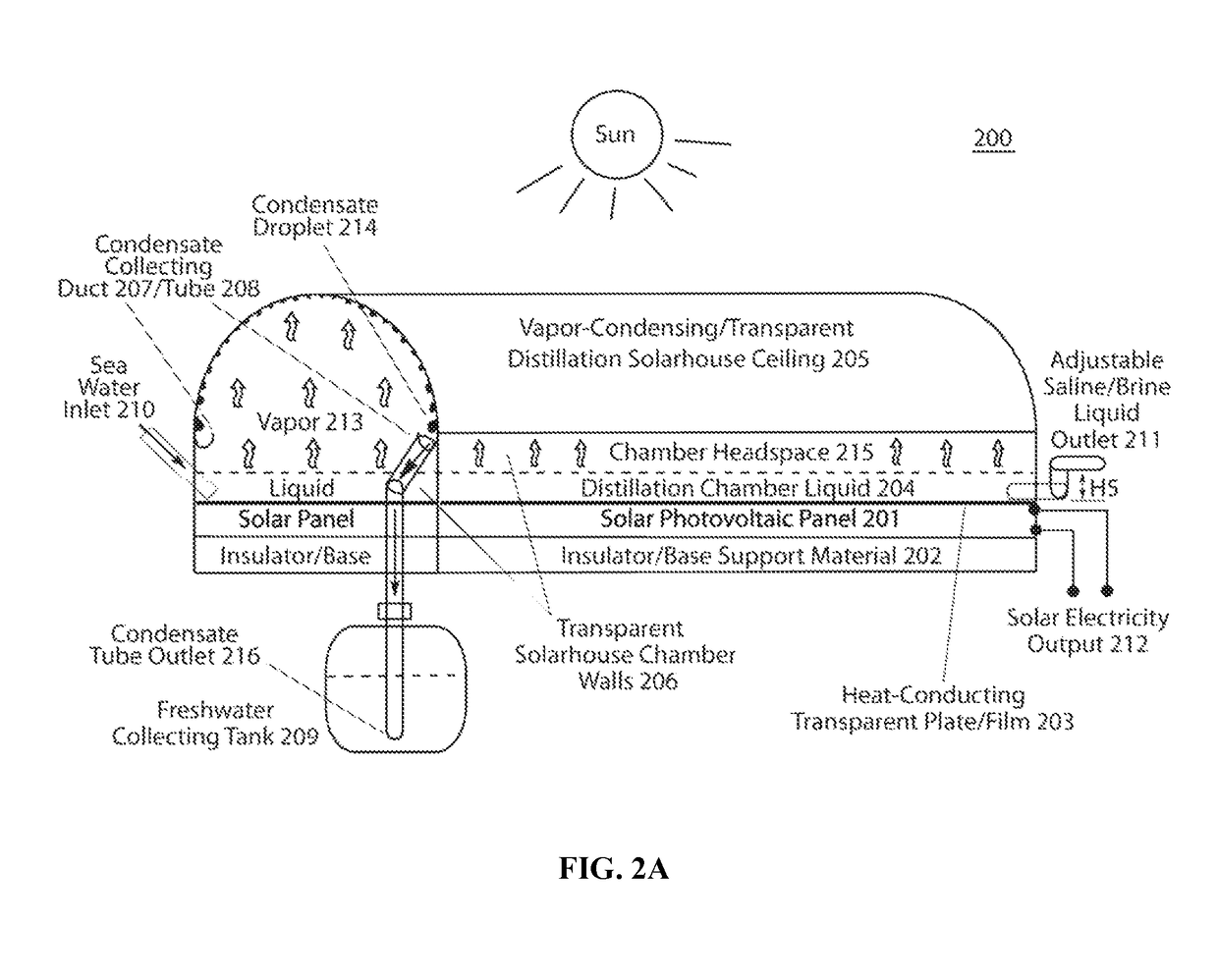Photovoltaic panel-interfaced solar-greenhouse distillation systems
a photovoltaic and solar energy technology, applied in the field of solar energy technology, can solve the problems of only generating heat, photovoltaic cells operating as quantum energy conversion devices with thermodynamic efficiency limits, and major thermal design challenges, and achieve the effect of improving solar energy utilization efficiency and beneficial utilization of photovoltai
- Summary
- Abstract
- Description
- Claims
- Application Information
AI Technical Summary
Benefits of technology
Problems solved by technology
Method used
Image
Examples
Embodiment Construction
[0036]Exemplary embodiments in accordance with the present invention are directed to a method based on a hybrid photovoltaic panel-interfaced distillation technology system with and without the use of a hydrophobic microporous membrane distillation process for generation of electricity, freshwater, distilled water, hot steam, salts, saline / brine products, advanced biofuels and bioproducts such as ethanol. Methods in accordance with the present invention yield significantly higher total solar energy utilization efficiency than that of a photovoltaic panel for electricity generation alone.
[0037]Presently, the majority of commercial photovoltaic panels (modules) are used typically with an inverter to convert the DC to AC electricity for grid connected power generation. Based on the solar energy conversion efficiency of around 15% for the presently available commercial photovoltaic panels, about 85% of the solar energy is dissipated as heat at the photovoltaic panels. As mentioned befor...
PUM
| Property | Measurement | Unit |
|---|---|---|
| angle | aaaaa | aaaaa |
| temperature | aaaaa | aaaaa |
| temperature | aaaaa | aaaaa |
Abstract
Description
Claims
Application Information
 Login to View More
Login to View More - R&D
- Intellectual Property
- Life Sciences
- Materials
- Tech Scout
- Unparalleled Data Quality
- Higher Quality Content
- 60% Fewer Hallucinations
Browse by: Latest US Patents, China's latest patents, Technical Efficacy Thesaurus, Application Domain, Technology Topic, Popular Technical Reports.
© 2025 PatSnap. All rights reserved.Legal|Privacy policy|Modern Slavery Act Transparency Statement|Sitemap|About US| Contact US: help@patsnap.com



